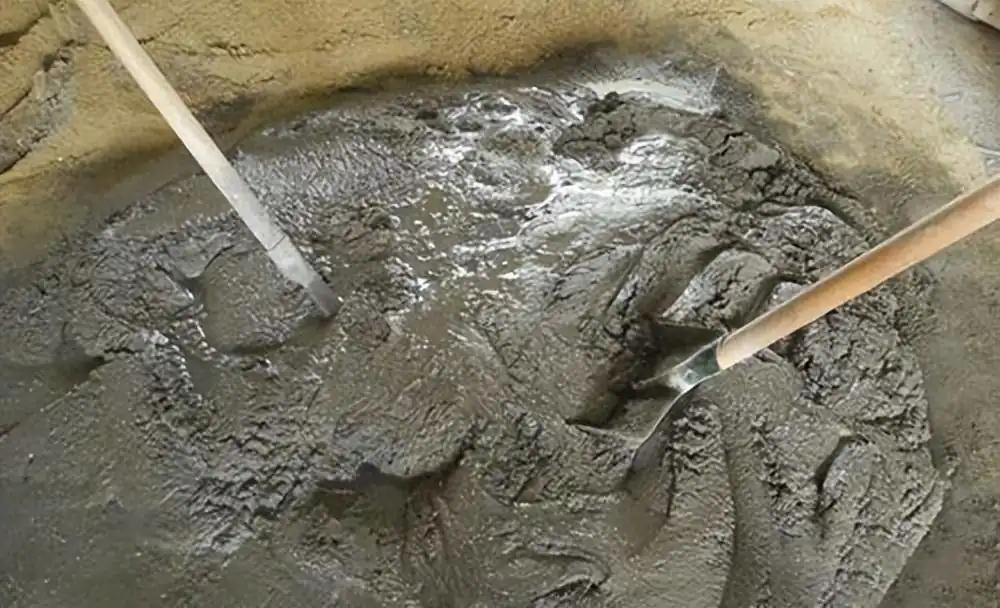In oil and gas drilling engineering, cement slurry is injected between the casing and the formation to form a sealing layer, ensuring wellbore stability, preventing oil and gas channeling, and achieving long-term sealing. However, during the hydration process of cement slurry, the following may occur: volume shrinkage, micro-cracks, and sealing failure (gas channeling or water channeling).

To compensate for the volume change of the cement slurry system, the introduction of expansive agents has become a crucial measure. Magnesium oxide is a commonly used expansive agent with good expansion performance and economy, especially suitable for deep wells and high-temperature wells.

I. Basic Expansion Reaction Principle
Magnesium oxide reacts with water in a hydration environment to produce magnesium hydroxide, and this reaction is accompanied by volume expansion:
MgO + H₂O → Mg(OH)₂
The volume expansion rate of this reaction is approximately 118%.
Magnesium hydroxide has a plate-like or flaky crystal structure, and its growth leads to volume expansion.
Features:
- Belongs to chemical expansion and does not rely on gas release;
- The expansion process is slow and can last from several hours to several days;
- Significantly affected by temperature, pressure, and magnesium oxide activity.
II. Manifestation of Expansion Process in Cement Slurry System
Before and after the initial setting of the cement, magnesium oxide begins to react, and expansion stress gradually forms;
This stress can partially offset the tensile stress caused by shrinkage, temperature drop, or changes in the curing environment;
It plays a “self-stress compensation” role, which helps to improve the density and bonding strength of the cement stone.
Experimental observation:
- A small amount of magnesium oxide added can improve the integrity of the sealing layer;
- Enhance the interfacial bonding strength between the cement stone and the casing and wellbore;
- Reduce the risk of micro-cracks and improve long-term sealing reliability.
III. Key Factors Affecting Expansion Effect
The expansion mechanism of magnesium oxide is affected by various factors. The first is its own physical and chemical properties. The activity of magnesium oxide is mainly determined by the calcination temperature: magnesium oxide formed by low-temperature calcination has high activity and fast hydration reaction, which is suitable for short-term rapid expansion; while magnesium oxide calcined at high temperatures has a slow reaction and is suitable for applications requiring long-term slow expansion compensation.
Secondly, the smaller the particle size of magnesium oxide, the faster the reaction and the faster the expansion rate. In addition, the higher the ambient temperature, the faster the hydration reaction and the greater the expansion rate. Therefore, downhole temperature is an important basis for selecting the type of magnesium oxide.
The alkalinity of the cement system also has a certain impact on the expansion. A high-alkaline environment is conducive to the stable formation of magnesium hydroxide, avoiding premature dissolution or failure of expansion products.
Finally, the dosage of magnesium oxide directly determines the magnitude of the expansion stress. Too little dosage will result in insufficient expansion, while too much dosage may lead to a decrease in cement strength or internal cracking. Therefore, a reasonable dosage needs to be optimized through experiments.
IV. Practical Engineering Significance
- Preventing gas channeling: Expansion compensates for potential gaps between the wellbore and the casing, forming a highly dense seal;
- Enhancing bonding: Expansion stress improves the bonding strength between cement and casing, and formation;
- Adapting to complex downhole conditions: By selecting magnesium oxide with different activities, the expansion control for different well temperatures and pressures can be achieved.
